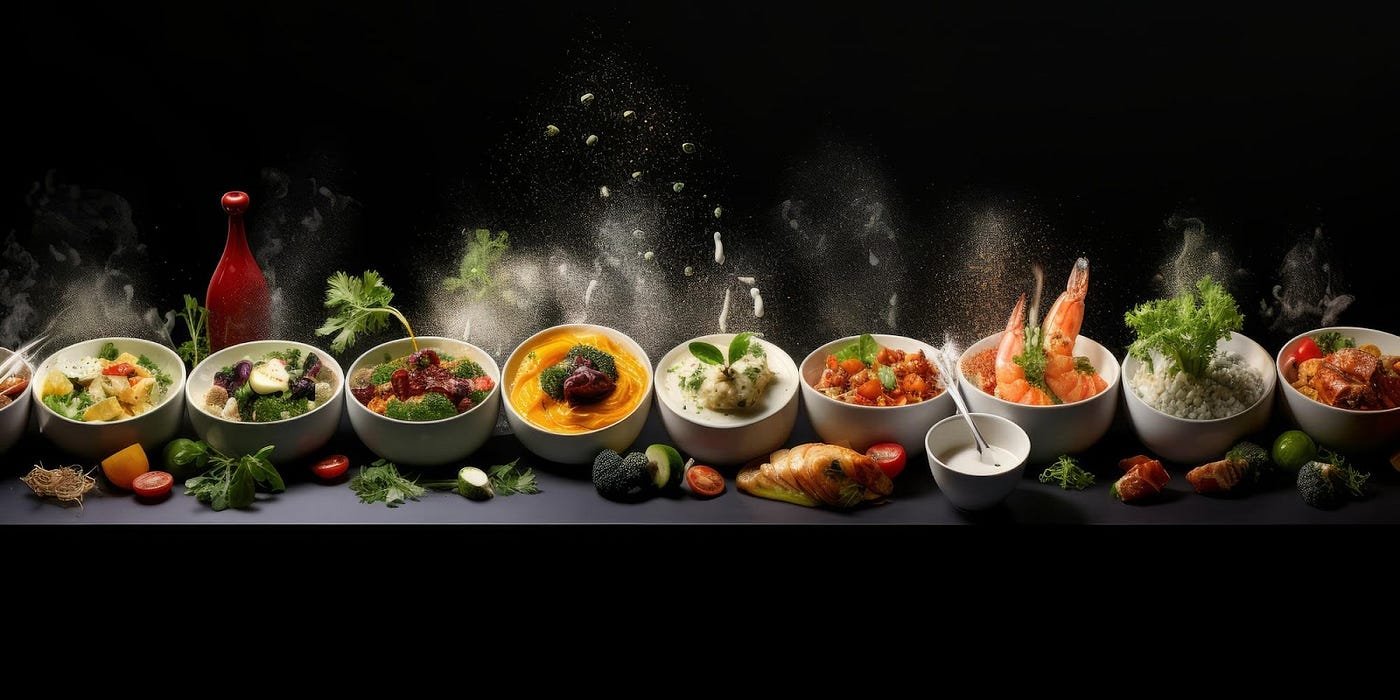In today’s ever-evolving culinary landscape, the boundaries of traditional cooking are being pushed to create exciting and innovative dining experiences. One of the most notable trends shaping the food industry is the rise of fusion and mash-ups. This trend involves combining elements from different cuisines or classic dishes to create novel and delicious hybrids. From grilled cheese paired with tomato soup to inventive creations like pizza mac and cheese, consumers are embracing these creative mash-ups, reflecting a broader interest in fusion cuisine and adventurous eating.
Table of Contents
The Origins of Fusion Cuisine
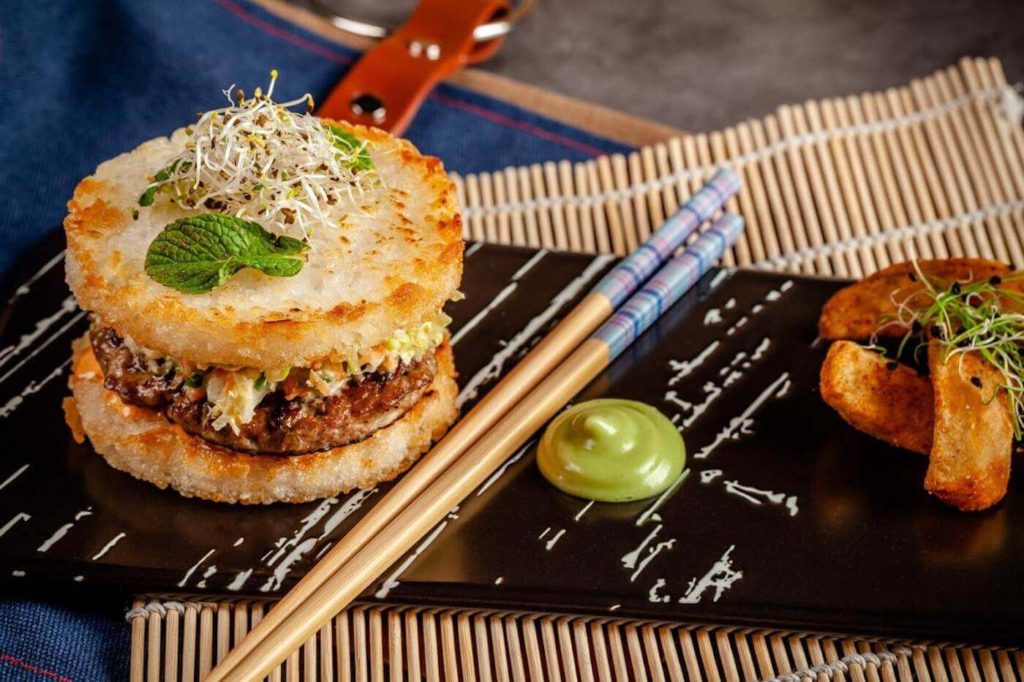
Fusion cuisine is not a new concept. It has roots in cultural exchanges that date back centuries, where different culinary traditions influenced one another due to trade, migration, and colonization. However, the modern movement towards deliberate and innovative fusion cooking began gaining momentum in the late 20th century. Renowned chefs started experimenting with blending flavors, techniques, and ingredients from various culinary traditions to craft dishes that defy conventional categorization.
Why Fusion and Mash-Ups?

Several factors contribute to the growing popularity of fusion and mash-up dishes:
- Globalization: With increased access to global ingredients and the influence of international cuisines, chefs and home cooks alike are inspired to experiment with different culinary traditions.
- Cultural Diversity: As societies become more multicultural, the blending of culinary practices from different cultures becomes a natural and celebrated phenomenon.
- Adventurous Eating: Modern consumers, especially younger generations, are more willing to try new and unconventional foods. They seek out unique dining experiences that challenge their palates and offer something different from the norm.
- Innovation in Cooking: Chefs are constantly looking for ways to innovate and stand out in a competitive market. Fusion cuisine allows them to create signature dishes that can attract attention and acclaim.
Popular Fusion and Mash-Up Dishes
1. Grilled Cheese and Tomato Soup Combo

The classic pairing of grilled cheese and tomato soup has been reimagined in various forms, from grilled cheese croutons in tomato soup to tomato soup dip for grilled cheese sandwiches. This comfort food combination highlights how traditional favorites can be creatively adapted to offer a new dining experience.
Recipe Example:
- Grilled Cheese Croutons: Cut a grilled cheese sandwich into bite-sized cubes and serve them as croutons in a bowl of rich tomato soup. This twist adds texture and fun to the classic pairing.
2. Pizza Mac and Cheese
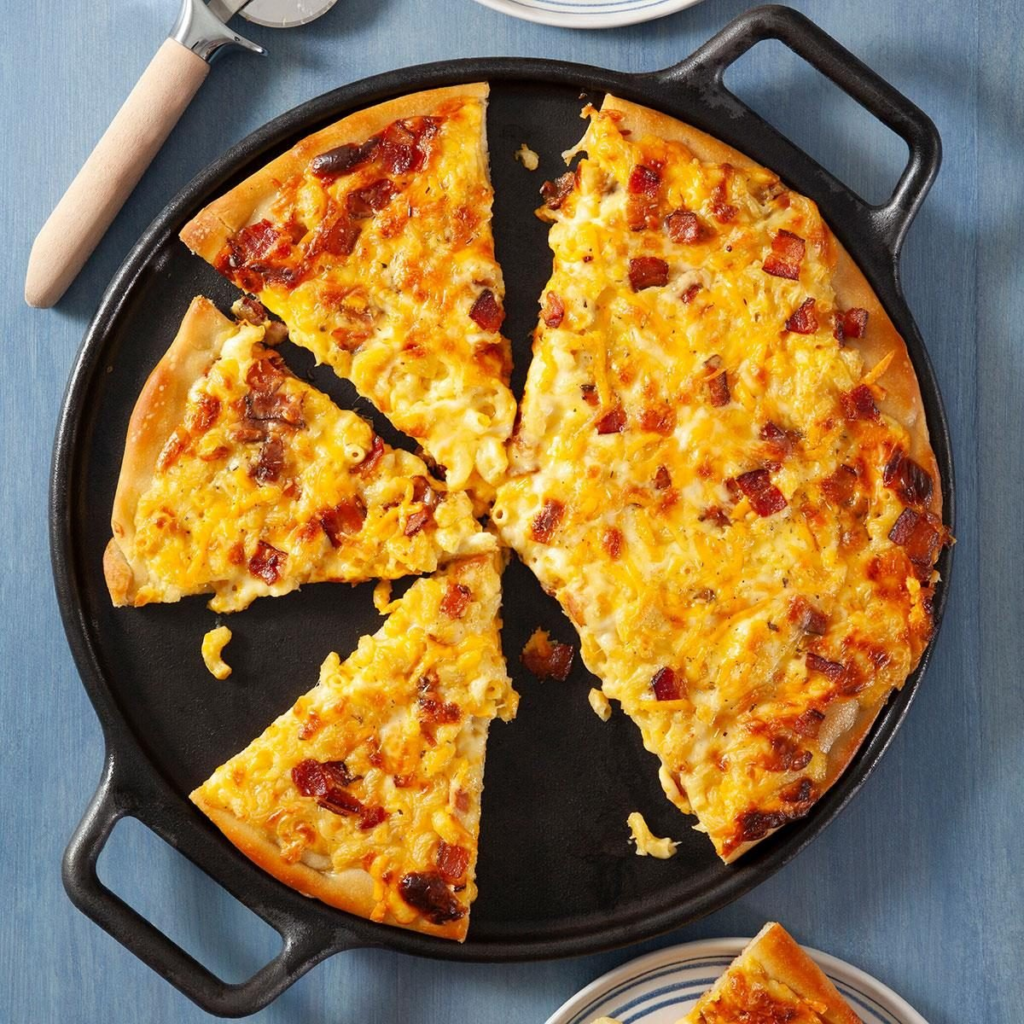
Pizza mac and cheese is a perfect example of a dish that combines the best elements of two beloved foods. By blending the cheesy, gooey goodness of mac and cheese with the savory toppings of a pizza, this mash-up caters to fans of both dishes.
Recipe Example:
- Pizza Mac and Cheese: Prepare a traditional mac and cheese base, then mix in pizza toppings like pepperoni, mozzarella, and marinara sauce. Bake until bubbly and golden, creating a dish that’s comforting and full of flavor.
3. Sushi Burritos
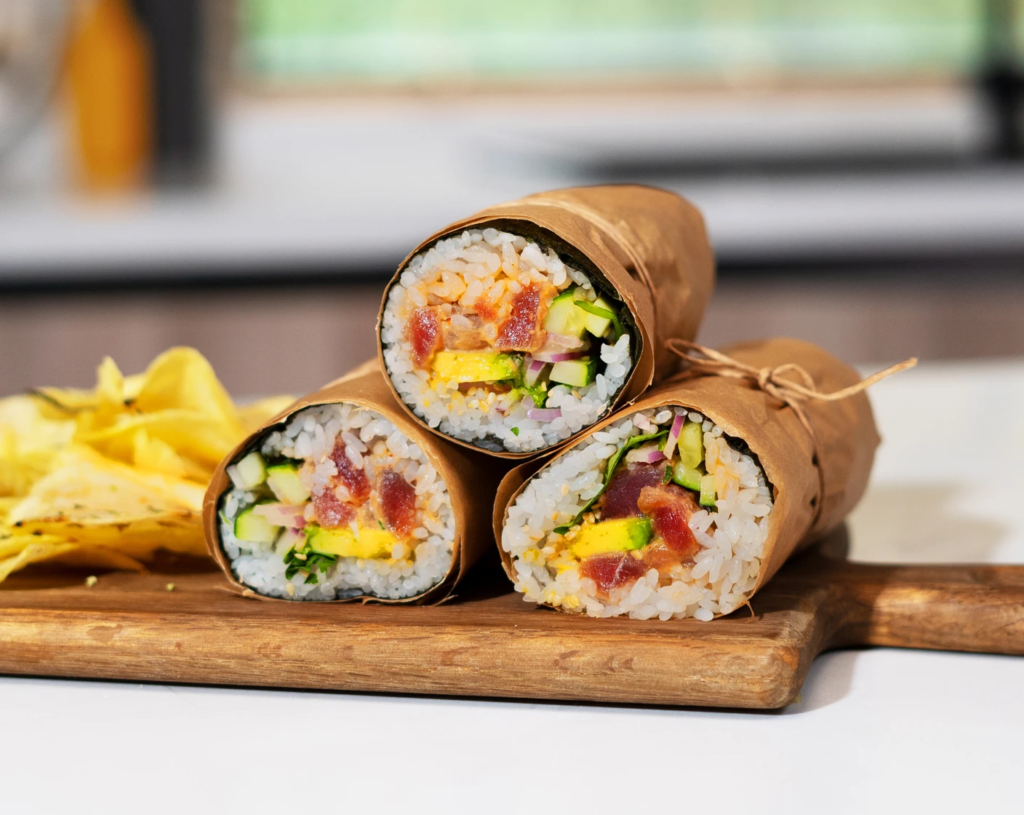
Sushi burritos combine the elements of a sushi roll with the convenience and size of a burrito. This fusion dish wraps sushi ingredients such as fish, rice, and vegetables in a large seaweed sheet, making it portable and easy to eat on the go.
Recipe Example:
- Sushi Burrito: Lay out a large nori sheet, add a layer of sushi rice, and top with your favorite sushi fillings (e.g., tuna, avocado, cucumber). Roll tightly and slice in half for a satisfying and portable meal.
4. Korean Tacos
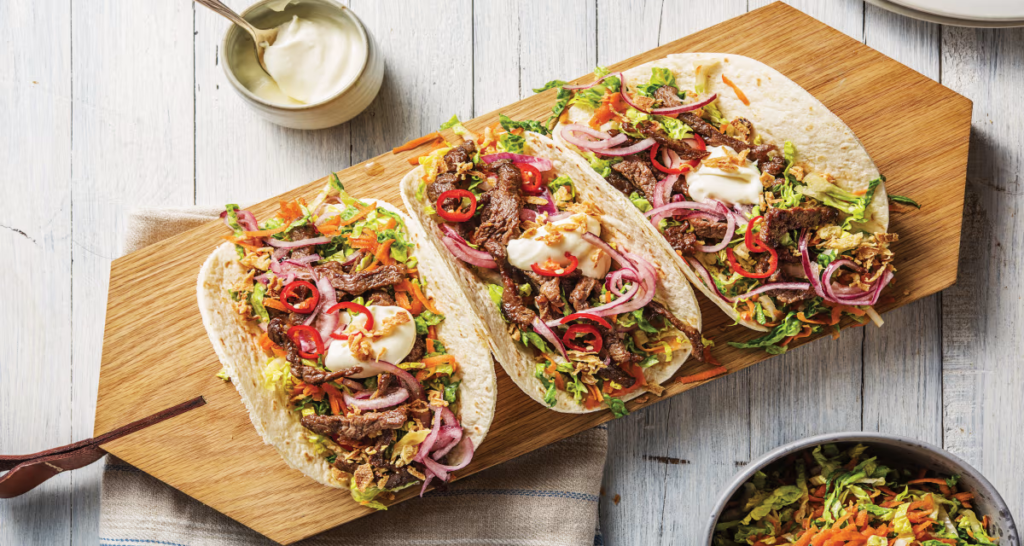
Korean tacos are a fusion of Mexican and Korean cuisines, typically featuring Korean-style marinated meats like bulgogi or kalbi served in a taco shell with traditional Mexican toppings like cilantro, lime, and spicy salsa.
Recipe Example:
- Korean BBQ Tacos: Marinate beef in a mixture of soy sauce, garlic, ginger, and sugar, then grill and slice thinly. Serve in soft tortillas with kimchi, cilantro, and a drizzle of sriracha mayo.
5. Ramen Burgers

The ramen burger, which replaces the traditional bread bun with pressed, cooked ramen noodles, is a unique fusion dish that combines the flavors of a hamburger with the texture of ramen.
Recipe Example:
- Ramen Burger: Cook ramen noodles and mix with an egg to bind. Shape into buns and pan-fry until crispy. Assemble the burger with a beef patty, lettuce, tomato, and your choice of sauce.
The Influence of Food Media and Social Media
The rise of food media and social media platforms has played a significant role in the popularization of fusion and mash-up dishes. Television shows, cooking competitions, food blogs, and platforms like Instagram and TikTok provide chefs and home cooks with a platform to share their innovative creations with a global audience.
Impact of Social Media:
- Viral Trends: Dishes like sushi burritos and ramen burgers have gained immense popularity through viral posts and videos, encouraging more people to try and create these fusion foods at home.
- Food Influencers: Influencers and food bloggers often experiment with and promote fusion recipes, inspiring their followers to explore new culinary combinations.
- Accessibility: Social media makes it easy for consumers to discover and access recipes from diverse culinary traditions, fostering a culture of experimentation and adventurous eating.
The Art of Creating Fusion Dishes
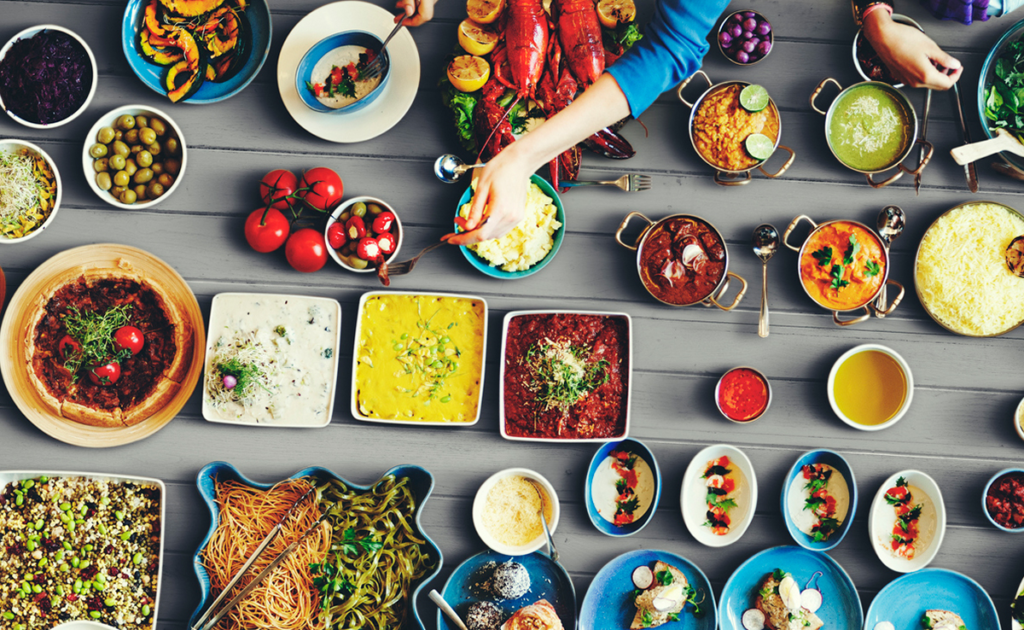
Creating successful fusion dishes requires a balance of creativity, respect for the original cuisines, and an understanding of how different flavors and textures can complement each other. Here are some tips for creating your own fusion recipes:
- Understand the Basics: Start with a solid understanding of the cuisines you want to blend. Know the key ingredients, techniques, and flavor profiles of each cuisine.
- Balance Flavors: Fusion dishes should harmonize the flavors from the different cuisines. Aim for a balance of sweet, salty, sour, and umami to create a well-rounded dish.
- Experiment and Iterate: Don’t be afraid to experiment with different combinations. It might take a few tries to get the perfect fusion recipe, so be patient and open to adjusting ingredients and techniques.
- Respect Cultural Origins: While fusion cooking is about innovation, it’s important to respect the cultural origins of the cuisines you’re blending. Avoid cultural appropriation by giving credit and context to the traditional dishes and ingredients you’re using.
The Future of Fusion and Mash-Up Cuisine

As the culinary world continues to evolve, fusion and mash-up cuisine are likely to become even more innovative and widespread. Several trends suggest the future direction of this exciting culinary movement:
- Hyper-Local Fusion: Combining local ingredients with global techniques to create dishes that are unique to a specific region. This approach celebrates local produce while incorporating international flavors.
- Plant-Based Fusion: As plant-based diets gain popularity, chefs are creating fusion dishes that cater to vegans and vegetarians. This includes plant-based versions of traditional fusion dishes and entirely new creations that highlight the versatility of plant-based ingredients.
- Tech-Driven Innovation: Advances in food technology, such as 3D printing and molecular gastronomy, are opening new possibilities for fusion cuisine. Chefs can create textures and flavors that were previously unimaginable, pushing the boundaries of culinary creativity.
- Cultural Collaborations: As the world becomes more interconnected, collaborations between chefs from different cultural backgrounds are becoming more common. These collaborations result in fusion dishes that are more authentic and respectful of the original cuisines ).
Conclusion
Fusion and mash-up cuisine represents the dynamic and ever-evolving nature of the culinary world. By blending elements from different cuisines or classic dishes, chefs and home cooks can create innovative, delicious, and adventurous meals that reflect the diversity and creativity of contemporary cooking. Whether through viral social media trends, cultural collaborations, or hyper-local experimentation, fusion cuisine continues to push the boundaries of what’s possible in the kitchen, offering endless opportunities for culinary exploration and enjoyment.
For more information, visit thebusinessoffoodmr.com
FAQ
1. What is fusion cuisine?
Fusion cuisine involves blending elements from different culinary traditions to create innovative dishes that incorporate diverse flavors, techniques, and ingredients. It aims to bring together the best aspects of various cuisines to offer a unique dining experience.
2. How did fusion cuisine originate?
Fusion cuisine has roots in cultural exchanges that have occurred over centuries due to trade, migration, and colonization. The modern movement toward intentional fusion cooking began in the late 20th century, with chefs experimenting to craft novel dishes that defy traditional categorization
3. Why are fusion and mash-up dishes becoming popular?
Several factors contribute to their popularity:
Globalization: Increased access to global ingredients and the influence of international cuisines.
Cultural Diversity: Multicultural societies blend culinary practices.
Adventurous Eating: Consumers, especially younger generations, seek unique and unconventional foods.
Innovation: Chefs innovate to stand out in a competitive market
4. Can you give examples of popular fusion and mash-up dishes?
Yes, some popular examples include:
Grilled Cheese and Tomato Soup Combo: Traditional favorites combined in novel ways, such as grilled cheese croutons in tomato soup.
Pizza Mac and Cheese: Blending mac and cheese with pizza toppings for a comforting and flavorful dish.
Sushi Burritos: Sushi ingredients wrapped in a large seaweed sheet, offering portability and convenience.
Korean Tacos: Korean-style marinated meats served in a taco shell with traditional Mexican toppings.
Ramen Burgers: Burgers with ramen noodle buns instead of traditional bread
5. How has social media influenced the rise of fusion cuisine?
Social media platforms like Instagram and TikTok play a significant role by:
Creating Viral Trends: Dishes gain popularity through viral posts and videos.
Showcasing Influencers: Food influencers and bloggers experiment with and promote fusion recipes.
Increasing Accessibility: Social media makes it easy to discover and access recipes from diverse culinary traditions
6. What are some tips for creating successful fusion dishes?
Creating successful fusion dishes involves:
Understanding the Basics: Know the key ingredients, techniques, and flavor profiles of each cuisine.
Balancing Flavors: Aim for a balance of sweet, salty, sour, and umami.
Experimenting: Be open to adjusting ingredients and techniques through trial and error.
Respecting Cultural Origins: Give credit and context to the traditional dishes and ingredients used
7. What are some future trends in fusion and mash-up cuisine?
Future trends include:
Hyper-Local Fusion: Combining local ingredients with global techniques.
Plant-Based Fusion: Creating fusion dishes for vegans and vegetarians.
Tech-Driven Innovation: Using advances in food technology to create new textures and flavors.
Cultural Collaborations: Chefs from different backgrounds collaborating to create authentic fusion dishes
8. Where can I find recipes for fusion dishes?
Recipes for fusion dishes can be found on various food blogs, culinary websites, and social media platforms. Many chefs and food influencers share their innovative recipes online, providing inspiration and guidance for home cooks.
9. How can I incorporate fusion cuisine into my home cooking?
Start by experimenting with familiar dishes and adding elements from different cuisines. For example:
Add a Korean twist to your tacos with bulgogi and kimchi.
Blend Italian and American classics by making pizza mac and cheese.
Create a fusion dessert by combining elements of Japanese and French pastries
10. What are some challenges of fusion cooking?
Challenges include:
Balancing flavors without overwhelming the dish.
Ensuring cultural respect and avoiding appropriation.
Experimenting with ingredients that may not traditionally pair well together
